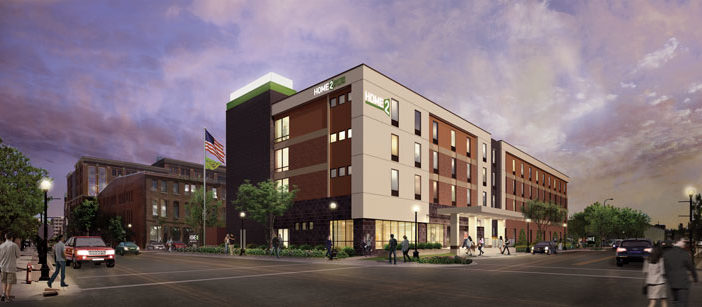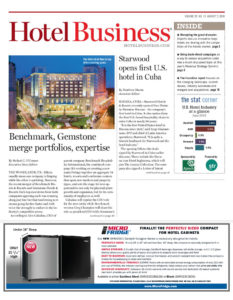NATIONAL REPORT—With the overall industry bracing for an eventual change in the cycle—the fundamentals, while slowing down, are still positive—how is the extended-stay segment faring? The experts are positive for the remainder of 2016 and 2017, but like most segments, that is on a market-to-market basis.
Looking at hotel development, J.P. Ford, SVP and director of business development, Lodging Econometrics, noted that the extended-stay supply growth echoes the overall industry. “The majority of the development of the extended-stay market mirrors the overall hotel development pipeline. Upscale and upper-midscale extended-stay brands dominate the extended-stay pipeline and the same is true of the overall hotel development pipeline,” he said. “It’s not really a big difference.”
Mark Skinner, partner, The Highland Group, said, “The first quarter of 2016 was the strongest extended-stay supply growth in six years. Supply was up 5.9% compared to the first quarter of 2015.”
Ford added, “The extended-stay positioning within the market is quite strong right now. You have approximately 25% of the total hotel construction pipeline that is made up of extended-stay brands. That’s pretty significant. The extended-stay growth in 2016 in terms of new openings is expected to be about 7.2%. In 2015, it was 6.1%.” In the first half of 2016, 93 new extended-stay hotels opened in the United States.
According to Ford, the number one market for extended-stay brands in the channel is Houston. “There are 50 projects in the pipeline for Houston right now, or 5,366 rooms,” he said, adding that this is a preliminary Q2 2016 count. “Houston being number one isn’t that surprising; you’re in oil and gas country down there. It’s an area where people stay for extended periods of times,” he said.
Skinner noted that Houston could be a market to watch. “2016 is going to be a very good year in terms of positive RevPAR change,” he said, adding that it’s market-to-market. “Some markets, and certainly some submarkets, are already feeling it. Overall, some markets will feel it earlier largely because of supply and other issues—like Houston with the oil situation.”
According to Lodging Econometrics, Houston is followed by Dallas with 36 projects (4,022 guestrooms); Nashville, TN, with 28 projects (3,051 guestrooms); Washington, DC, with 27 projects (3,414 guestrooms); and Austin, TX, with 23 projects (2,431 guestrooms). “All five of those have very large supply pipelines to begin with, so, as a result, they’ll have a pretty strong mix of extended-stay products in their pipeline as well,” noted Ford.
Adrian Kurre, global head of Homewood Suites and Home2 Suites by Hilton, said urban destinations will continue to be a target for extended-stay. “We’ve done well in suburban markets and finding those areas that have extended-stay training business, but now it’s the urban markets we’re trying to fill in,” he said, noting that the brands have adopted the prototypes to fit urban sites better. “It’s extremely expensive to build in any urban market…we’re now allowing up to 85% of our hotel to be studio suites, and that is much more efficient for our owners.”
Another trend that will continue is dual-branded properties. “A Homewood or Home2 is always the anchor brand. We focus heavily on the extended-stay segment for that anchor so that you drive as much extended-stay business in there,” explained Kurre. “If you focus on that extended-stay, you then use that overflow and the two res systems to work together to fill the hotel on the transient side, which creates all the efficiencies.”
For his part, with regard to supply issues, Mike Wohl, VP operations, Sonesta ES Suites, said that the increases in supply are a concern for hoteliers. “As an industry, we have a tendency to overplay our hand on new hotel development and can bring too much supply to the market too quickly,” he said.
But while supply is increasing, it still depends on the market. “Of the hundred largest markets in the country, at the end of 2015, about 40 of them reported no extended-stay hotels under construction. It’s definitely not all doom and gloom at all,” said Skinner, adding that many extended-stay products are in need of replacement. “We’re at the point now where we’re approaching 400,000 extended-stay hotel rooms. There are quite a block of those that were built between 1980 and 1990. There’s some obsolescence there, some replacement and rebranding opportunities—a lot of opportunities, particularly in the economy segment.”
Wohl agreed regarding the potential for rebranding opportunities. “Our growth strategy is through acquisition, so economic ebbs and flows bring hotels to the market for a variety of reasons, and a variety of markets,” he said. “We are always interested in new opportunities. In fact, we have created a bit of a niche for ourselves converting gen-one properties from other brands and successfully relaunching them in their markets.”
Skinner elaborated on what the supply growth means for the future. “[The supply increase] was about a percentage point faster than demand growth, so what you’re likely to see over the next year or year and a half is that supply growth will exceed demand growth and occupancy will start to decline from what was record-high levels,” he explained. “I think you’ll probably see the upscale segment decline most in occupancy because its supply growth is faster. The economy segment will probably show the least decline because it has the least amount of construction going on.”
Other factors will affect occupancy aside from supply, said Skinner. “How quickly the decline in occupancy occurs is really going to be related to the economy. Demand will continue to increase, but it’s unlikely it’s going to increase at the same rate as supply because it’s just got too big,” he said.
Skinner also pointed out that there are positives. “Average rate growth is still very, very good,” he said, adding that it was up 5.7% in the first quarter of 2016. Upscale, which had the largest supply growth, was only up 3.5%. “I think what we’ll see over this year is we’re going to see ADR growth high enough to offset the decline in occupancy and give us positive RevPAR growth,” he said.
Kurre was similarly positive. “We are showing record occupancy levels and as we listen to all of the experts, there is no reason to assume this wouldn’t remain strong through at least 2017, based upon the supply and demand curve,” he said. “Supply is still at historic lows and demand is still increasing—not as much as we would like it to be, but we are in a very strong position to be able to continue our RevPAR growth for the foreseeable future.”
Skinner predicts RevPAR will turn negative sometime in 2017—but with fluctuations on a quarterly basis within the segments. “For instance, there was some significant movement with some acquisitions and rebrandings between mid-price and economy, which tended to muddy the waters in the first quarter. As the year goes on, that will even out,” he said. “You’re going to see the upscale segment probably be the first one to show a negative quarter-on-quarter decline in RevPAR and then what you might see, of course, is it might reverse the following quarter. One quarter is not enough in order to make a trend, but I think you’ll see that trend starting sometime in 2017, which is typical of where we are in the cycle. It’s to be expected.”
Wohl added that he’s very positive for the next 12-18 months, particularly because extended-stay hotels are a bit more insulated to fluctuations in the cycle. “As we have seen in past economic cycles, extended-stay hotels do not have the same sharp peaks and valleys as traditional hotels and weather economic storms extremely well,” he said, expanding on the drivers behind this. “In slower economic times, discretionary spending gets reduced. Extended-stay hotels attract travel involved with infrastructure, and computer installs, plant upgrades and employee training, which all still happen independent of the economy.”
Kurre echoed that ability to insulate, noting that Homewood has opened its 400th hotel and has more than 130 in the pipeline and Home2 opened its 100th hotel and has 320 in the pipeline. “We do know that we have a lot of hotels in the pipeline, which means that others in the industry are also building hotels. We know we need to keep our eye on that supply-and-demand intersection,” he said. “We’re a cyclical business so we really want to watch that.”
Kurre noted all of Hilton’s all-suite hotels are successful during the downside in any market. “When you look at the cyclical natures of RevPAR index, on the downside of a market, these hotels really shine; our RevPAR index numbers are very strong in comparison to the transient side of the business.
“What we do know is the extended-stay nature of our business is not one that comes through the normal distribution channels and it’s one that is very local-market and sales driven,” he continued. “We have our teams focused on solidifying as much of that extended-stay business to insulate ourselves from the downside of the market. If we focus on selling extended-stay now, when that intersection happens, we’re not scrambling for business. We’ll insulate ourselves and keep our hotels successful.”
Skinner noted that it’s a tactic extended-stay hotels often employ. “What you tend to see is average length of stay decline as rates go up and performance gets stronger—and this is particularly true in the upscale segment—they displace some of their lower-rated accounts to replace with higher-rated, short-term business, so it pushes the rate up,” he said. “But then when occupancies start to decline over a period of time, you will see the reverse happen. High occupancy is key to extended-stay operating margins in any segment, so what you’ll see is a focus more on extended-stay contracts at lower rates in each segment as occupancy starts to decline. There’s been a slight decrease in average length of stay, I would think, and we’ll see in the next couple of years that will start to lengthen again.” HB



